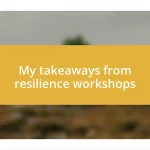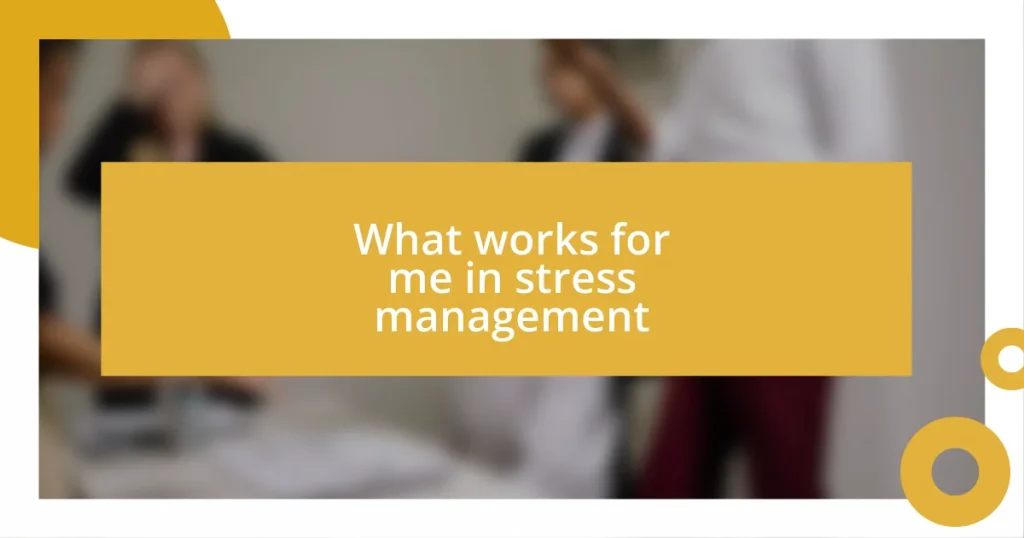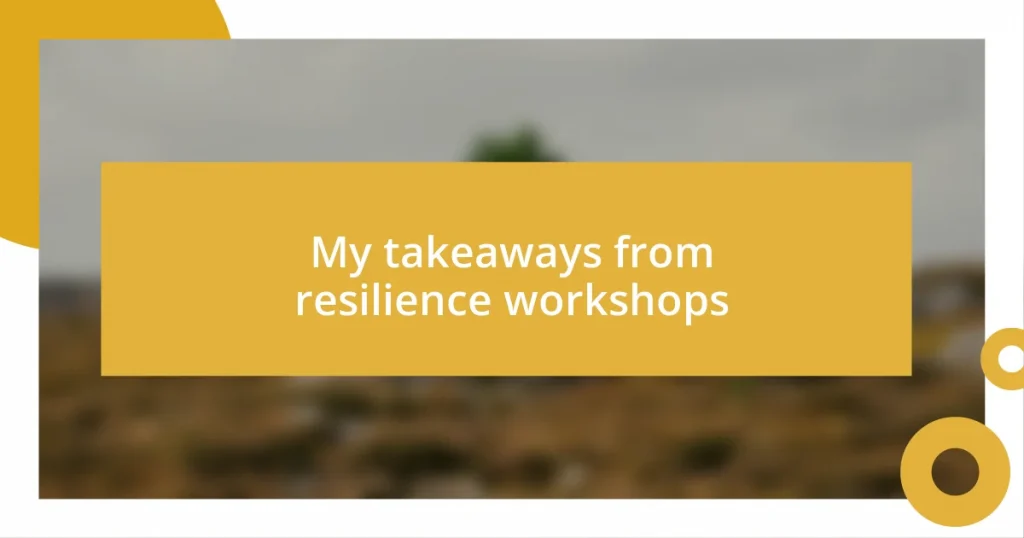Key takeaways:
- Challenging behaviors often stem from unmet emotional, physical, or developmental needs; understanding the context is key to fostering connection and support.
- Recognizing triggers and patterns in behaviors allows for proactive management, leading to a calmer and more predictable environment for individuals.
- Implementing strategies like positive reinforcement, clear communication, and seeking professional support can significantly transform behavior and create a nurturing classroom environment.
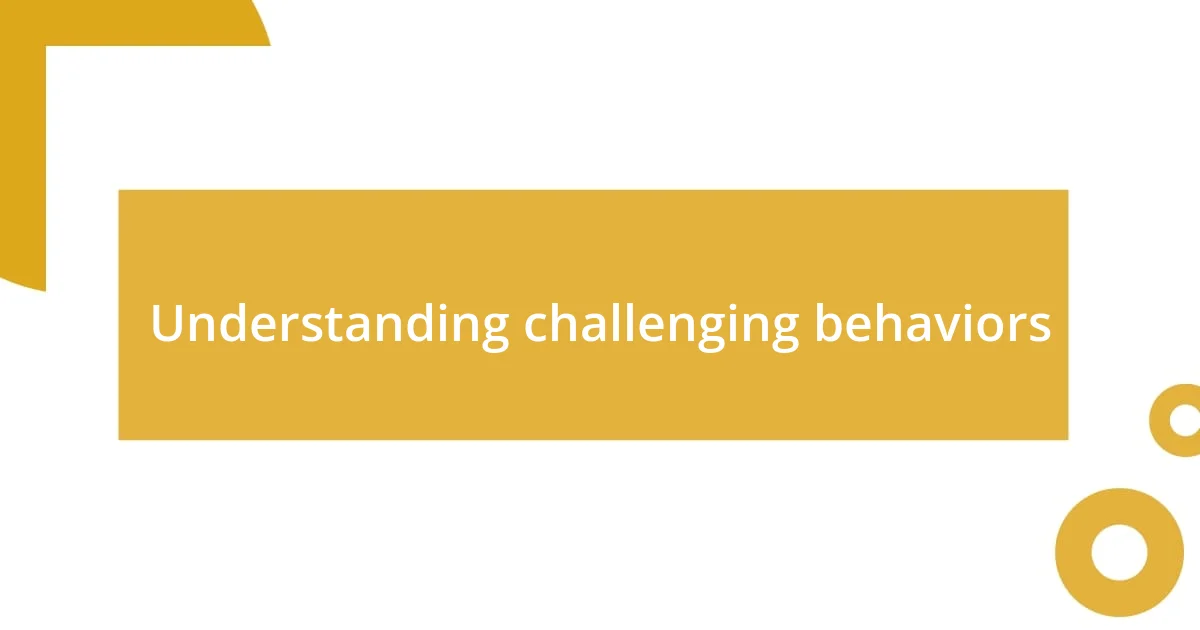
Understanding challenging behaviors
Challenging behaviors often arise from unmet needs, whether emotional, physical, or developmental. I’ve noticed this firsthand when I worked with children who exhibited disruptive behavior. When I took the time to understand what was really bothering them—be it hunger, fatigue, or a need for attention—their challenging behaviors simply faded away.
One thing that strikes me is how often these behaviors communicate something deeper. Have you ever seen a child act out during a transition? I remember a time when a little girl wouldn’t stop shouting in class, and it turned out she was overwhelmed by changes happening at home. It made me realize that sometimes, the loudest actions are really cries for help that we need to decipher.
Exploring the underlying motivations behind these behaviors can be eye-opening. For example, I once worked with a teenager who seemed aloof and rebellious. Through our conversations, I discovered he was feeling isolated and pressured by social expectations. This experience reinforced my belief that understanding the context of behaviors is crucial; it’s not just about managing them, but truly connecting with the individual behind them.
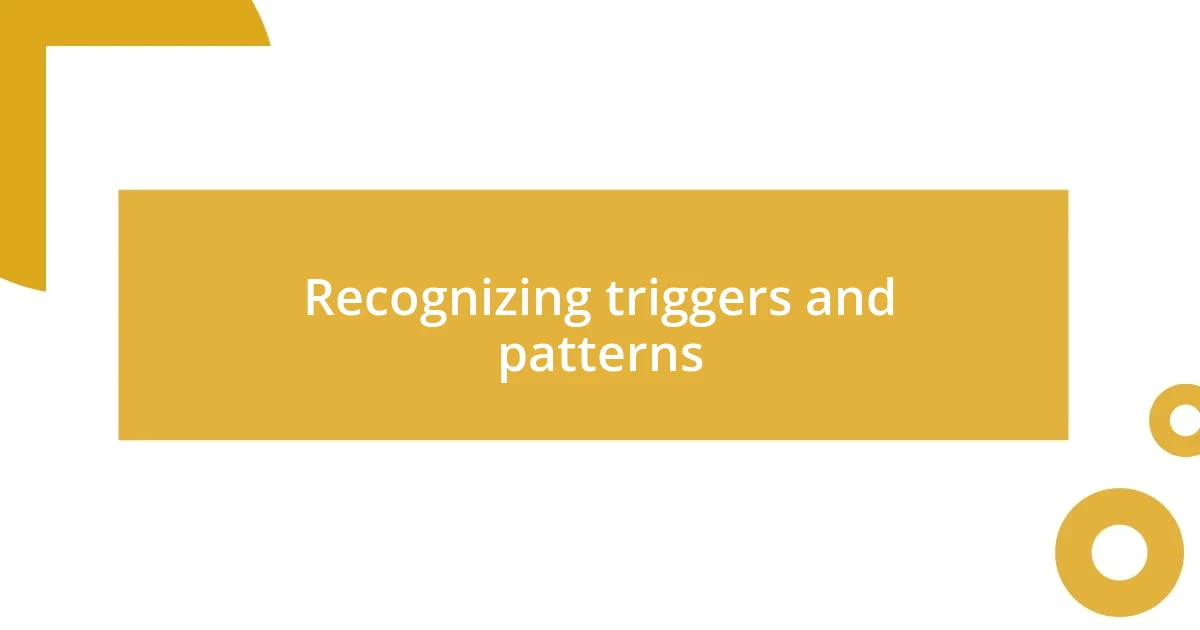
Recognizing triggers and patterns
Recognizing triggers and patterns in behavior is essential for effective management. I’ve observed that specific situations often lead to challenging behaviors, especially in children. For instance, I once noticed a student struggling to concentrate after lunch. It turned out that the noise and chaos of the cafeteria overwhelmed him, triggering his frustration. Identifying these triggers helped us create a more supportive environment for him.
Patterns can often reveal themselves over time. When I reflect on my experiences, I remember another child who would react dramatically during group activities. After careful observation, I realized that his outbursts mostly occurred when he felt overshadowed or ignored in a group. Once I began engaging him more directly, the outbursts decreased significantly. This taught me the importance of regular observation to catch those recurring triggers early.
In my journey, I’ve learned that recognizing these nuances requires patience and intention. For example, I recall working with a child who would only exhibit challenging behaviors during certain times of the day. By documenting these occurrences, I discovered he was simply craving routine and predictability. When we established a clearer schedule, his anxieties began to subside, showing how essential it is to observe and understand these patterns.
| Type | Example |
|---|---|
| Trigger | Cafeteria chaos led to frustration |
| Pattern | Outbursts during group activities when feeling ignored |
| Recurring Behavior | Anxiety during unstructured times |
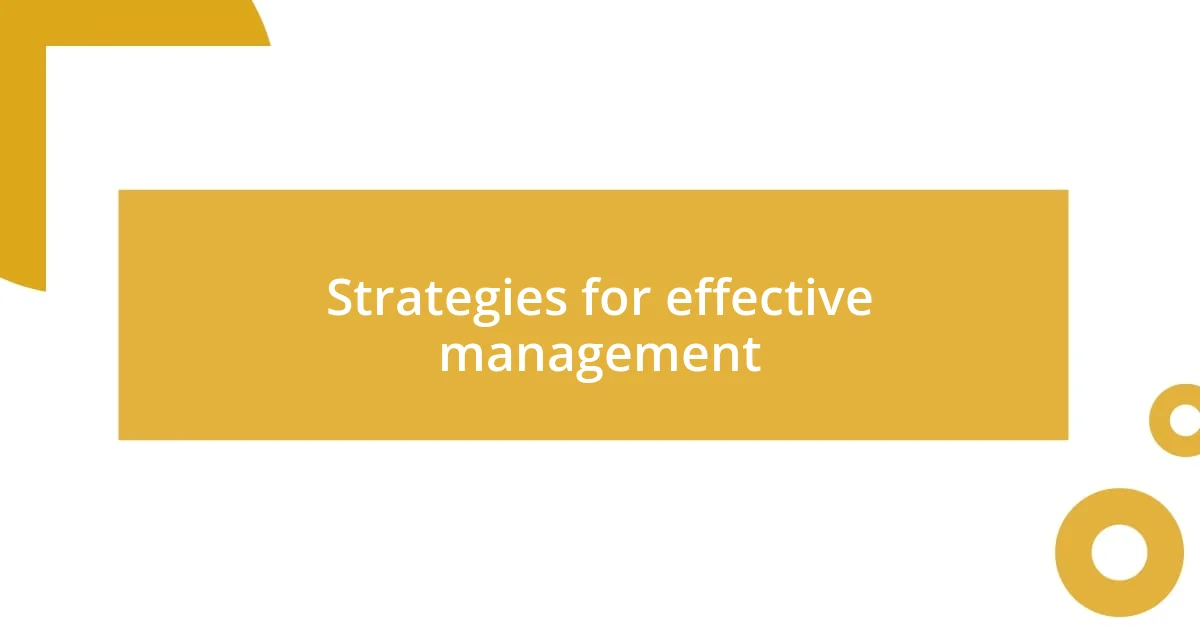
Strategies for effective management
When it comes to managing challenging behaviors, implementing proactive strategies can make all the difference. One approach that has worked well for me is establishing clear expectations. For instance, I remember when I started using visual schedules in my classroom. They not only helped students understand what to expect but also made transitions smoother. It’s amazing how a simple chart can alleviate anxiety and reduce disruptive behavior.
Here are some effective strategies that I have found helpful:
- Build strong relationships: Take time to connect with individuals and foster trust; it creates a safe space for open communication.
- Use positive reinforcement: Acknowledging and rewarding good behavior encourages more of the desired actions.
- Implement consistent routines: Predictability can soothe anxieties, especially in those who thrive on structure.
- Teach self-regulation skills: Helping individuals develop coping strategies empowers them to manage their emotions more effectively.
- Maintain a calm demeanor: Your own emotional state can influence others; modeling calmness can help de-escalate situations.
I’ve found that integrating these strategies not only aids in managing behavior but also cultivates a supportive environment conducive to growth and learning. It’s gratifying to witness significant improvements when these techniques are applied consistently.
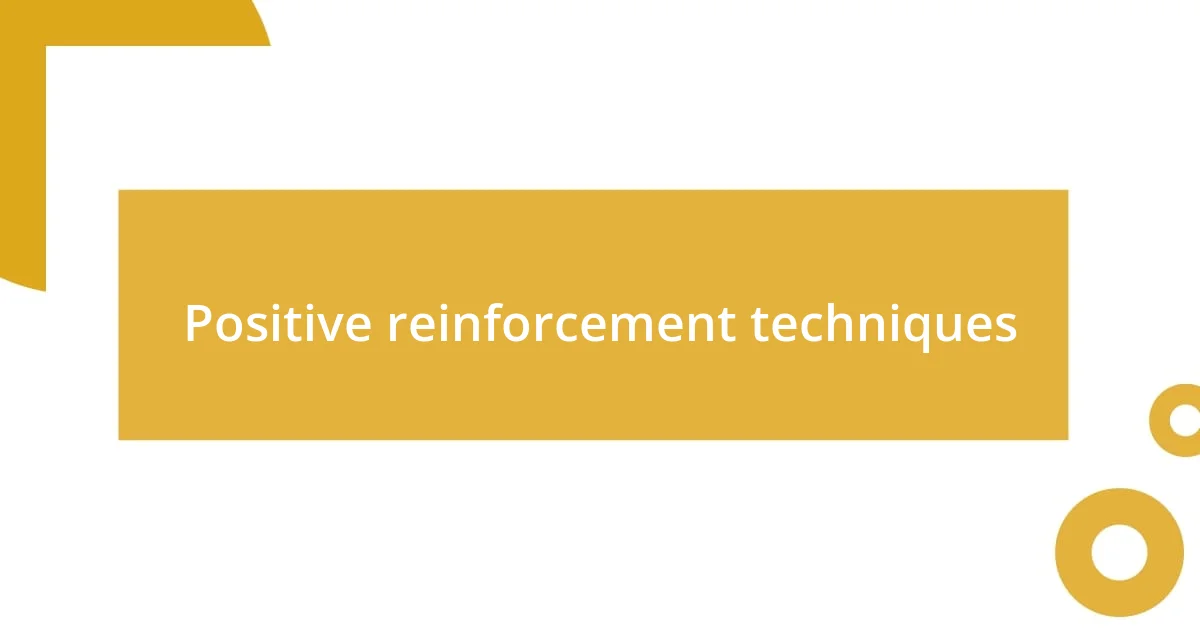
Positive reinforcement techniques
Positive reinforcement techniques can truly transform the way we address challenging behaviors. I remember a time when I was working with a particularly impulsive child. Rather than focusing on what he was doing wrong, I decided to celebrate his moments of success, however small. I instituted a reward system, where he earned points for staying seated during class discussions. The joy on his face when he reached his first goal was priceless, and it motivated him to continue improving.
Another experience that comes to mind involved using verbal praise to reinforce positive behaviors. There was a student who would frequently interrupt, but I noticed he responded well to encouragement. I began acknowledging his efforts to raise his hand by saying, “I appreciate your patience!” Over time, not only did his interruptions decrease, but our positive interactions also strengthened our relationship. It made me realize how impactful sincere recognition can be—it’s a simple yet powerful technique that fosters a sense of belonging and worth.
Doesn’t it feel great to see someone shine for doing the right thing? I find that when I focus on positive reinforcement, behaviors often change naturally. For example, I’ve utilized small tokens, like stickers, as rewards for good behavior during group activities. It became a fun competition among students, as they aimed to collect as many as possible. This approach not only improved their behavior but also built camaraderie in the classroom. It’s a win-win situation that makes everyone feel good!
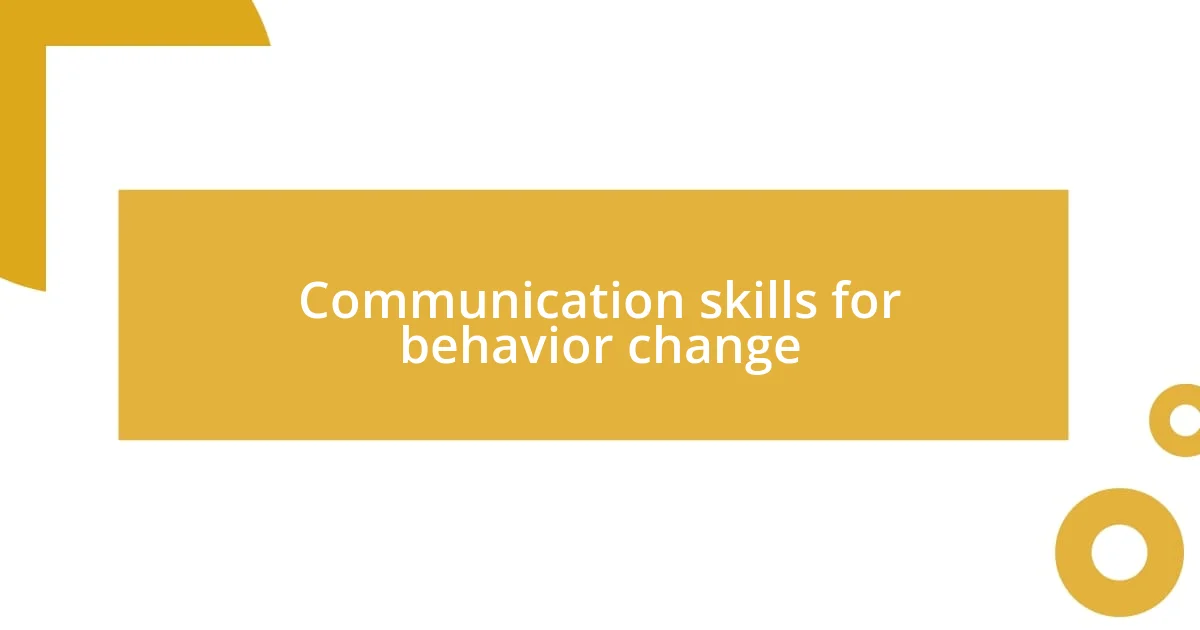
Communication skills for behavior change
When it comes to communication skills for behavior change, I’ve realized that active listening is crucial. I recall a moment when a student was acting out, and instead of reacting immediately, I took a step back. I asked him how he was feeling and really listened to his response. That simple act of giving him a voice opened up a dialogue that led to a breakthrough in his behavior. It made me wonder: how often do we overlook the power of truly understanding someone’s perspective?
Emotional intelligence also plays a significant role in effective communication. Once, during a challenging group discussion, I sensed rising tensions among my students. Rather than pushing forward with my lesson, I paused and acknowledged the discomfort in the room. By validating their feelings and inviting them to share their thoughts, I transformed a potentially volatile situation into an opportunity for bonding and understanding. It’s so rewarding to see how addressing emotions can lead to constructive behavior change!
Additionally, I’ve found that using clear and concise language can make a world of difference. I remember a time when I was explaining a complex task to my class. Instead of using jargon, I broke it down into simple steps and paired explanations with visuals. The confusion I often witnessed began to fade, and I saw students who previously struggled engage with the material. Isn’t it fascinating how clarity can reduce frustration and encourage a more cooperative atmosphere?
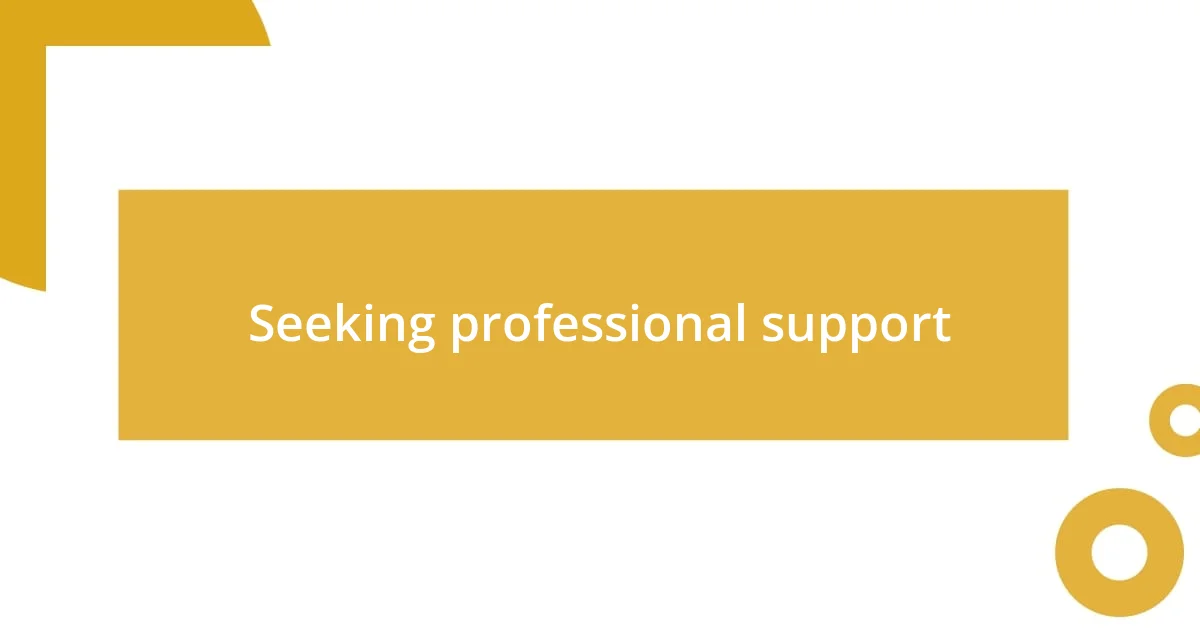
Seeking professional support
Seeking professional support can be a game-changer when dealing with challenging behaviors. I remember a time when I collaborated with a child psychologist to address a student’s severe anxiety, which often manifested as disruptive behavior in class. Just having that expert perspective helped me to tailor my approach, using specific strategies designed for her needs, and the difference in her confidence was astonishing.
It’s important to remember that seeking external help doesn’t mean we’re failing; it simply means we’re being proactive. When I reached out for guidance, the therapist provided me with valuable resources and techniques that I could implement in the classroom. It was enlightening to see how a few adjustments in my approach led to a more supportive environment, allowing my students to thrive instead of merely survive.
Why do we hesitate to ask for help? I’ve learned that collaboration can bring about profound changes. For instance, while consulting with behavioral specialists, I discovered new ways to implement consistent routines that brought stability to my classroom. It’s a reminder that no one needs to navigate this challenging journey alone, and turning to professionals can pave the way for lasting progress.
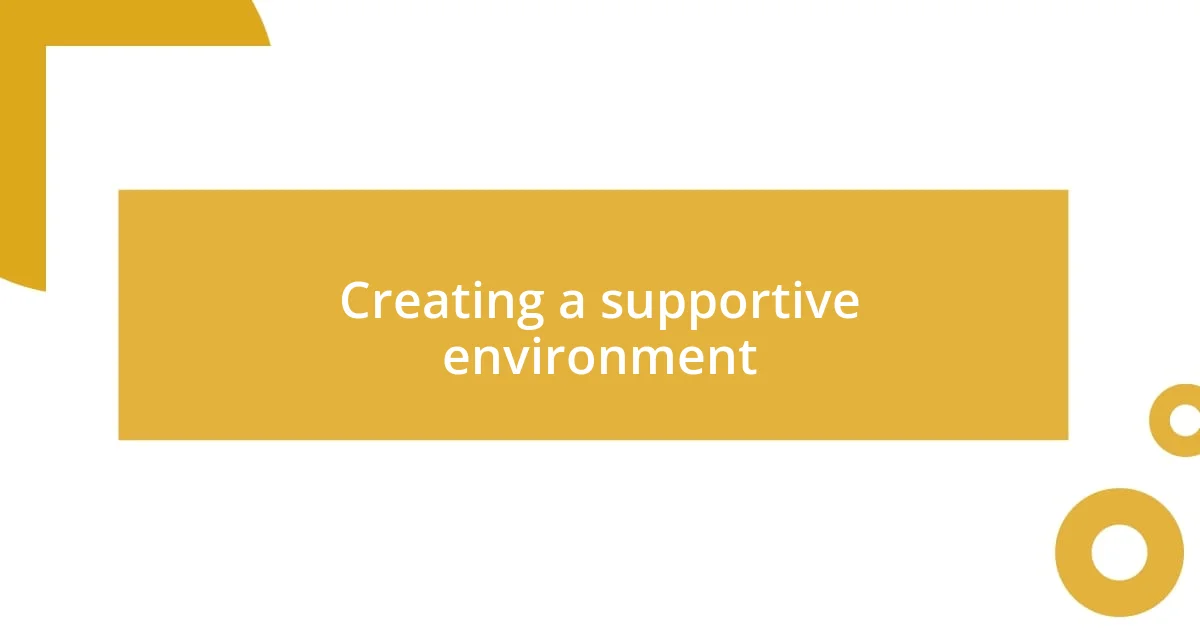
Creating a supportive environment
Creating a supportive environment can be transformative for both educators and students. For instance, I recall setting up my classroom with cozy reading corners and stress-relief tools like fidget spinners and calming visuals. When my students felt comfortable in their space, their anxiety diminished. Isn’t it amazing how the right environment can foster a sense of safety?
I’ve also learned the importance of routines in creating stability. I remember implementing a predictable daily schedule where students knew what to expect. This structure not only provided a calm atmosphere but also empowered the students to take ownership of their learning. How often do we underestimate the impact of a consistent routine on behavior?
Finally, fostering a culture of respect and inclusivity has been crucial. When I expressed appreciation for each student’s unique strengths and allowed them to teach one another, it nurtured a community spirit. I’ve seen firsthand how this sense of belonging dissuades negative behavior, prompting students to support each other. Isn’t it heartening to think about how a little kindness and recognition can lead to profound change?


